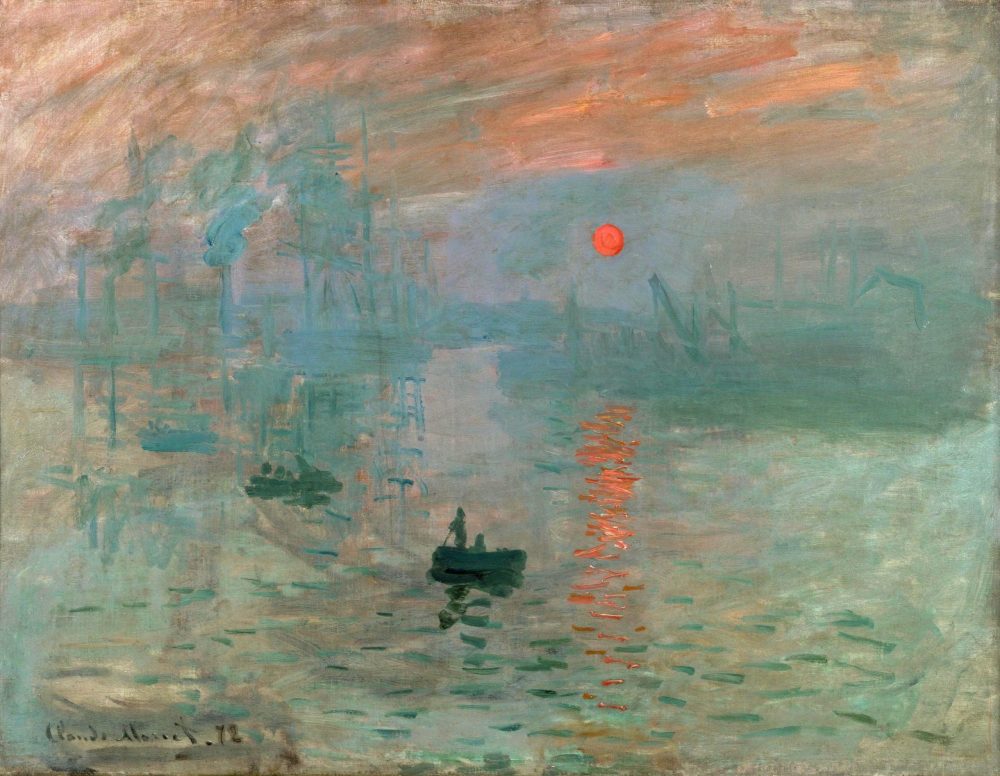The First Impressionist Exhibition
Stories
We could make this publication thanks to small donations. How is 3 minutos de arte supported?
The First Impressionist Exhibition (1874)
The Paris Salon exhibition was the most important event in Western art at the time. But it was an event that showed the world the old, not the new: artists with new concerns and a new aesthetic had no place in it.
The Paris Salon was the hall of “official art,” and those on the jury defended academic art (that taught at the Academy of Fine Arts, which preserved, cared for, and imposed the classical norms of representation).Therefore, many of those artists rejected by the official salon, rejected the official salon in turn and looked for alternative paths.
The Pavilion of Realism, organized by Courbet in 1855, was a major precedent. And then, curiously, in 1863, there were so many rejected artists that the Emperor Napoleon III personally authorized a room for them to exhibit alongside the official room: the Salon des Refusés (Hall of the Rejected), a crucial event for the birth of modern art.
In 1867, when Manet organized an exhibition of about 50 of his works, the group of artists from which impressionism was born raised the need to exhibit independently (something that took years to materialize).
The group of artists used to meet at the Café Guerbois, in the Batignolles neighborhood, where Manet had his studio. That is why they were called the Batignolles Group. And at the end of 1873, they formed the Anonymous Society of painters, sculptors and engravers. The objective was to organize group exhibitions without juries, as well as publish a magazine so as the group and its ideas became known.
Four months later, in April 1874, two weeks before the opening of the Paris Salon that year, the doors of the first impressionist exhibition were opened. It took place in the photographer Nadar’s workshop, and about 30 artists exhibited a total of 165 works in 7 or 8 rooms. Of course, since there was no selection by a jury, some of the works were not in line with what is known as “Impressionism.”
It is still being debated whether the high attendance of public meant a success or a failure. The point is that that number would be relative when, apparently, many visitors paid their entrance to “make fun” of the new and “crazy” trends. It’s still up for dispute whether the large turnout was a success or a failure. The argument is that that number is relative since many people appear to have paid their admission to “make fun” of the new and “crazy” tendencies.
There were bad reviews and good reviews. But the most famous is that of a certain Louis Leroy who, referring to Monet’s painting Impression, Rising Sun, wrote: “Impression… The wallpaper in its embryonic state seems more finished than that seascape!”
That journalist and his comment on the “impression” ten days after the exhibition gave the name to the group: “Impressionists.” Some used the term in a derogatory manner, while others used it in a favorable one.
Image: Impression, Sunrise (1872). Claude Monet.
Representative Participants of the exhibition: Monet, Renoir, Pissarro, Sisley, Degas, Cézanne (during his Impressionist period), Berthe Morisot, Boudin, Guillaumin.
A detail: Manet did not participate in this or the following exhibitions of the group since his intention was to “conquer” the official Salon.
Recommended links:
Fundamental Painters of Impressionism.
Characteristic Elements of Impressionist Painting.
Monet’s path to Impressionism.
Stories behind the Works of Art: Monet and the Rouen Cathedral.
You can also find more material using the search engine.




0 Comments